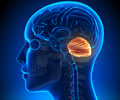Targeting multiple proteins known as proteinopathies at once may be the real key in treating neurodegenerative diseases, research finds. The prevalence of co-pathologies suggests that each disease may ultimately require combination therapy.

‘Misfolded proteins accumulate and destroy neurons across the different neurodegenerative disorders suggesting that combination therapy targeting multiple disease proteins may be the right treatment in neurodegenerative diseases.’





"Historically, the focus of most clinical trials has been on targeting the primary pathological proteins of a given neurodegenerative disease such as deposits of tau and Aβ for Alzheimer's disease, but we see now that many of these disease-related aggregated proteins affect most older patients across a full spectrum of clinical and neuropathological presentations," said senior author John Q. Trojanowski, MD, PhD, a professor of Pathology and Laboratory Medicine and director of Penn's Institute on Aging. "This gives us additional leverage to find ways to detect patients' specific proteinopathies with increasingly sophisticated biomarker and imaging technologies. This will allow us, and other researchers, to better match participants with specific targeted therapies in clinical trials." The study, which analyzed 766 autopsied brains at Penn's Center for Neurodegenerative Disease Research (CNDR)--revealed that patients with more severe forms of their diseases had more co-pathologies. Researchers also found that increased age and the presence of the APOE e4 allele, a typical gene variant associated with an increased risk for late-onset Alzheimer's disease, are risk factors for co-pathologies.
The researchers studied patients with the following diseases: Alzheimer's disease, Pick's disease, corticobasal degeneration (CBD), progressive supranuclear palsy, multiple system atrophy, Parkinson's disease with and without dementia, dementia with Lewy bodies, as well as frontotemporal lobar degeneration with TDP-43, amyotrophic lateral sclerosis, and primary age-related tauopathy (PART).
While co-pathologies have been observed in Alzheimer's and Lewy body disease, tau, AB, alpha-syn, and TDP-43 co-pathologies are rarely reported in the other neurodegenerative diseases.
The CNDR researchers found that co-pathologies were common but varied among the disease groups, ranging from 27 to 81 percent of patients having co-pathologies. For example, 52 percent of patients with CBD, in which tau as the primary protein, had multiple other neurodegenerative disease protein deposits present.
Advertisement
In several neurodegenerative diseases, co-pathologies increased more considerably. For example, in patients with Alzheimer's disease (tau and Aβ deposits are the primary signatures), α-syn pathology, similar to that of a Lewy body, increased by up to 55 percent and TDP-43 by up to 40 percent.
Advertisement
The presence of multiple co-pathologies increased from 9 percent to 25 percent between intermediate Alzheimer's and higher-level Alzheimer's patients, and from 0 percent to 21 percent between brainstem- or amygdala-only Lewy body disease and the more aggressive neocortical Lewy body disease.
These findings support the "proteopathic seeding" hypothesis that has been previously established in model systems of neurodegenerative diseases. Misfolded proteins may directly "cross-seed" other normal, vulnerable proteins to accumulate and clump via a cell-to-cell transfer of toxic proteins.
"Our study is an important first step in understanding the extent to which co-pathologies present in and impact all neurodegenerative diseases," said co-author Virginia M.-Y. Lee, PhD, the CNDR director and a professor of Pathology and Laboratory Medicine. "Now we need to probe these protein-to-protein interactions more closely to better understand how they progress in patients' brains, with an eye toward clinical studies that combine targeted therapies to halt or slow accumulation of these disease proteins."
The complete study is published in Brain.
Source-Eurekalert










